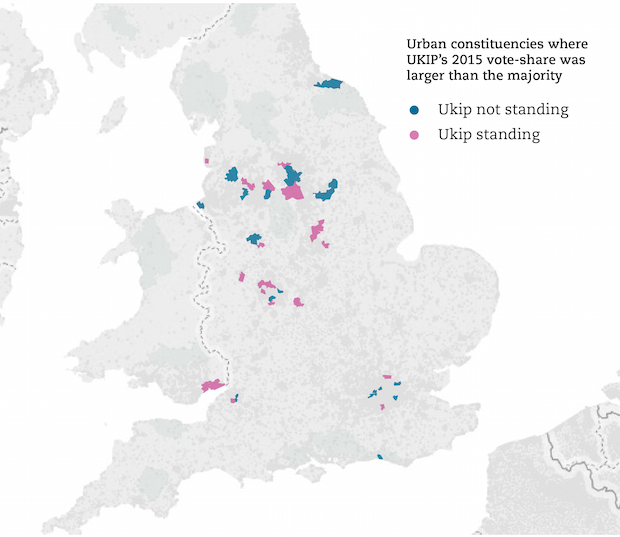If the last year or two have taught us one thing, it’s that predicting the results of an election is not easy. In the last week, polls showing anything from a 1-point to a 16-point Conservative lead have meant it’s hard to know just how much the UK’s electoral map will change.
But if you cast your mind back just a little, you might remember that many people around the country have already been to the polls once this year, and—despite major events in-between—those results could yet be an indicator of what might happen come Thursday.
And for those of us interested in cities and the future of how they are governed, there were two particularly interesting outcomes that day: firstly, the Conservatives won four of the six metro mayor contests that took place in English city regions; and secondly, Ukip lost a lot of their voters to the Conservatives.
Unlike the 2015 General Election campaign when George Osborne's “devolution revolution” was in full swing, this time the need for devolution has not made headlines, giving way instead to understandably bigger pressures such as Brexit, national security and a growing crisis in health and social care. Yet, those four new blue metro mayors present an interesting political opportunity for Theresa May, not to mention a challenge for Jeremy Corbyn.
Metro May
Once criticised for giving away power to Labour, Osborne’s pet project to introduce metro mayors to city regions has instead turned major urban conurbations blue.
Cambridgeshire and Peterborough was always going to elect a Conservative Mayor, but to win West Midlands after a very close race, and Tees Valley and the West of England—where both Labour and the Liberal Democrats were competitive—strongly suggests that after this general election there could easily be an increase in the number of urban Conservative MPs across the Midlands and the North.
While neither the Conservative or Labour manifestos promised much more than to carry on with city devolution in response to local appetite, if May is to return to No 10 with more city seats, this is likely to have a significant effect on the government's economic growth agenda over the next parliament. If support for midlands and northern cities from Conservative MPs was not forthcoming over the last year or two, a little new blood in the Commons could mark a change.
So if May does make substantial urban gains where might they be? Using last month’s voting trends rather than the national polls—which diverge wildly—alongside the vote shares from the last election, gives us interesting insights into this question.
(No) purple reign
While Ukip battles to remain relevant at the national level, the reality is that having lost a large number of votes during the local and mayoral elections to the Conservatives, it has chosen not to run in a number of parliamentary seats. That includes a number of urban seats worth keeping an eye on.
The map below shows urban constituencies where the 2015 Ukip vote share was actually bigger than the Labour majority. It also shows where Ukip both is and is not fielding candidates.

In the seats coloured blue, including Caroline’s Flint’s Don Valley constituency, Ukip will not be standing, and the number of votes they received at the last general election (in Don Valley this was 9,963) was larger than the majority (Flint won by 8,885). That leaves a number of core Labour seats vulnerable to the Conservatives.
In the seats coloured pink Ukip is standing, but if it loses out to the Conservatives in similar numbers to those seen in the local elections, then there is potential for several more urban seats in the Labour heartlands of the north and midlands to go to the Conservatives.
Here’s what the north and midlands urban electoral map looks like now, and then based on the Ukip vote shift:

Parting the red sea
Predictions are a fool’s game, but if there is a Conservative win on Friday morning, and if the map starts to look a little like the one on the right above, then we can expect much more interest in the urban agenda from the government than many commentators have predicted. Whether this is for more powers and more mayors, or simply a more pointed focus on urban housing, transport and schools, we might be faced with a new kind of metropolitan elite—the new urban blue.












